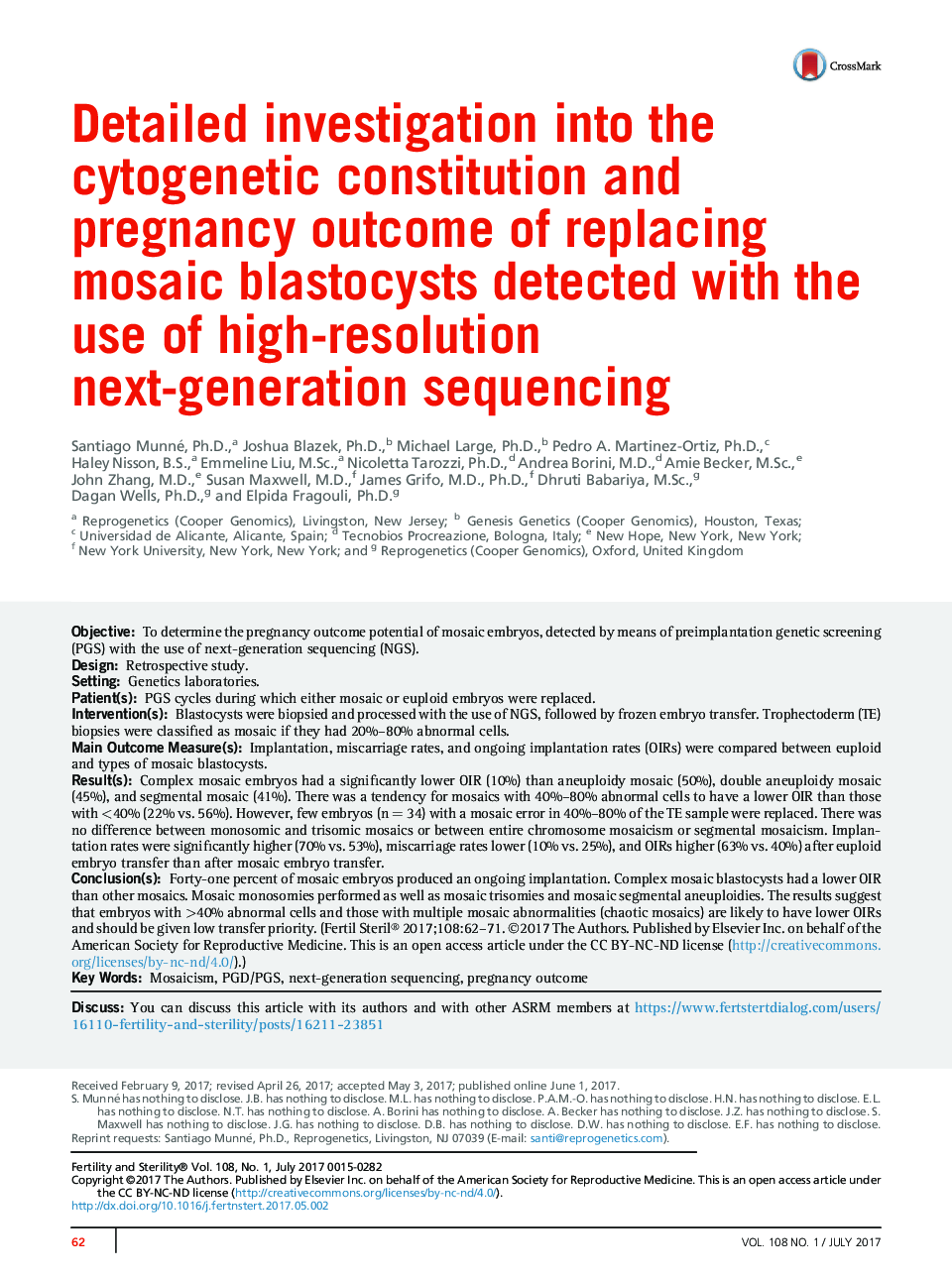| کد مقاله | کد نشریه | سال انتشار | مقاله انگلیسی | نسخه تمام متن |
|---|---|---|---|---|
| 5689989 | 1410011 | 2017 | 18 صفحه PDF | دانلود رایگان |
ObjectiveTo determine the pregnancy outcome potential of mosaic embryos, detected by means of preimplantation genetic screening (PGS) with the use of next-generation sequencing (NGS).DesignRetrospective study.SettingGenetics laboratories.Patient(s)PGS cycles during which either mosaic or euploid embryos were replaced.Intervention(s)Blastocysts were biopsied and processed with the use of NGS, followed by frozen embryo transfer. Trophectoderm (TE) biopsies were classified as mosaic if they had 20%-80% abnormal cells.Main Outcome Measure(s)Implantation, miscarriage rates, and ongoing implantation rates (OIRs) were compared between euploid and types of mosaic blastocysts.Result(s)Complex mosaic embryos had a significantly lower OIR (10%) than aneuploidy mosaic (50%), double aneuploidy mosaic (45%), and segmental mosaic (41%). There was a tendency for mosaics with 40%-80% abnormal cells to have a lower OIR than those with <40% (22% vs. 56%). However, few embryos (n = 34) with a mosaic error in 40%-80% of the TE sample were replaced. There was no difference between monosomic and trisomic mosaics or between entire chromosome mosaicism or segmental mosaicism. Implantation rates were significantly higher (70% vs. 53%), miscarriage rates lower (10% vs. 25%), and OIRs higher (63% vs. 40%) after euploid embryo transfer than after mosaic embryo transfer.Conclusion(s)Forty-one percent of mosaic embryos produced an ongoing implantation. Complex mosaic blastocysts had a lower OIR than other mosaics. Mosaic monosomies performed as well as mosaic trisomies and mosaic segmental aneuploidies. The results suggest that embryos with >40% abnormal cells and those with multiple mosaic abnormalities (chaotic mosaics) are likely to have lower OIRs and should be given low transfer priority.
Journal: Fertility and Sterility - Volume 108, Issue 1, July 2017, Pages 62-71.e8
